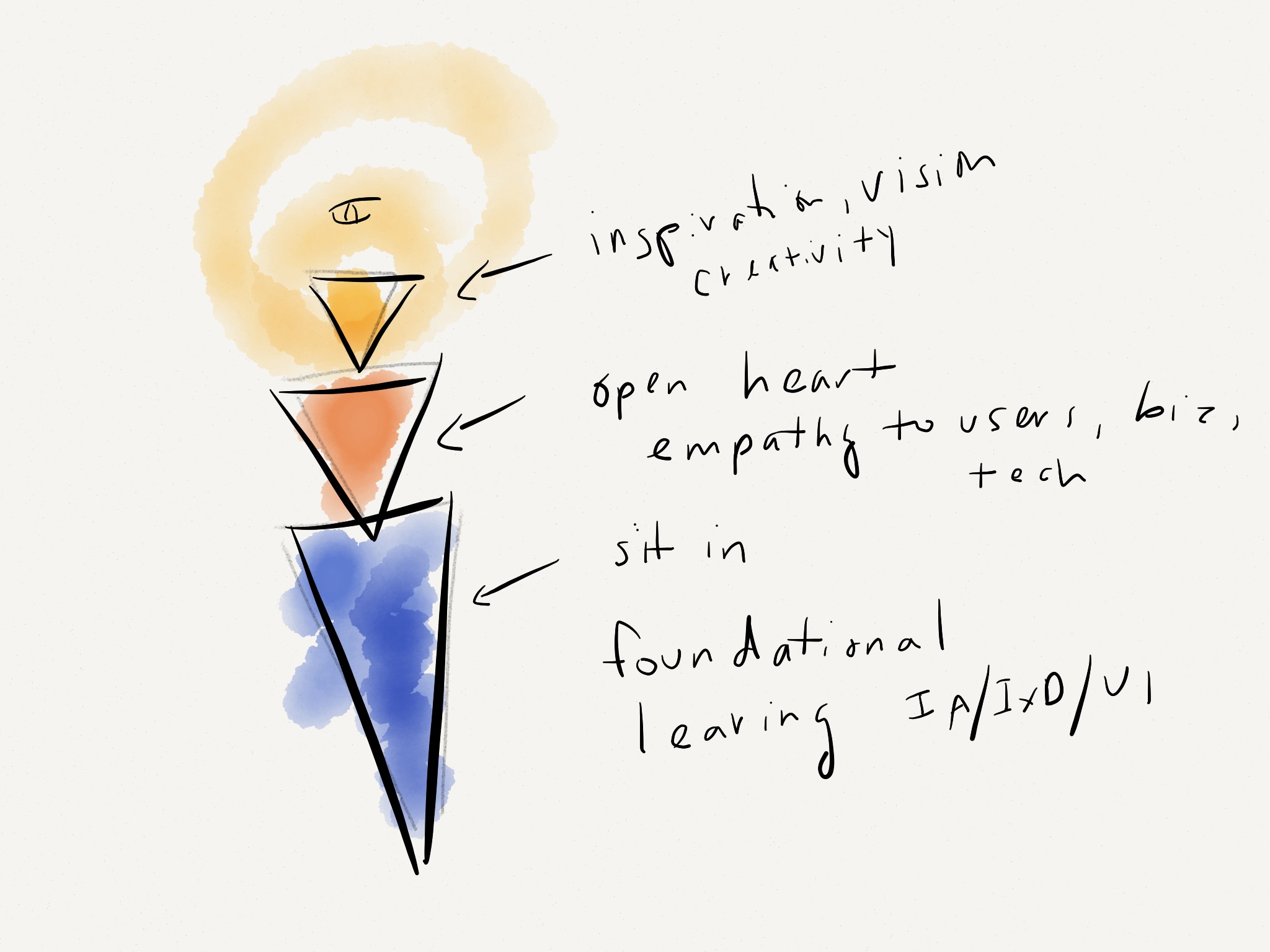Recently I’ve been working with General Assembly to create a new immersive user experience design class: five days a week, eight hours a day, eight weeks of user experience. Whew. Much as I enjoy doing impossible things, this one is a beast. However, the reason I keep doing impossible things is I learn so much. One intriguing moment was when we picked the continuum the students would be self-assessing on (and that they’d self-assess, which I love!) I took on defining the skills we agreed we’d use to evaluate, and write up the descriptions of each.
We picked four “hard skills” and three “soft skills” that make us a User Experience Designer. For sanity sake, I defined the hard skills rather narrowly, so they would complement rather than compete. I’m interested in how folks see these. What is missing? What’s not ringing true?
They follow:
Information Architecture
The organization and presentation of information to support retrieval, understanding and use.
Interaction Design
Design of the behavior of digital products to support use in order to support human goals, such as work, play and connection with each other.
Interface Design
The skill of using visual design principles to communicate use of a digital tool or information space in order to assure that the users of that product can effectively interact with it.
User Research
A collection of methods, both qualitative and quantitative, used to understand the audience of a digital product in order to inform design and business choices.
Design Communication
Ability to articulate your thinking via words and pictures. You should be able to create effective diagrams including sitemaps, task flows, conceptual diagrams, wireframes, and create final comps as well as invent new kinds of diagrams when needed. You must be able to present your ideas and work, explain your rationale and incorporate feedback.
Team Collaboration
Ability to understand business requirements and technical constraints/abilities and work with your product partners to design products that can be launched successfully into the world. Ability to collaborate on design solutions.
Profession Design Skills
Able to determine requirements, write a proposal, negotiate a project, present your solutions, discuss (and charge for) changes, estimate time it takes to do work, interview and be interviewed.
Interestingly, the hard skills were easier to define for me than the soft skills, despite all the endless fuss around the act of definition.
The Continuum
The student and teacher then compare notes on how they see the student’s skill level on a one to five scale:
One: No clue, or have heard of it but are unclear what it’s all about
Two: Could hire/interview someone to see if they hold this skill
Three: Can do this skills acceptably
Four: Can teach others this skill
Five: rock star ninja unicorn
Would this work for you?
Finally, I’m focusing on a “tai chi” style of teaching. When I was briefly studying tai chi, I loved the first posture. Our teacher described it as much in terms of emotion as physical alignment. You sat in to you hips, to gain stability, then opened your heart to the world, and finally lifting your mind to the sky for awareness and inspiration. I believe this is how you should learn to design as well.
